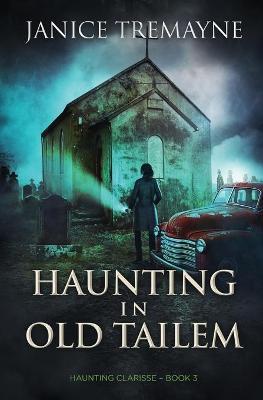Reviewed by Charli G. on
The Characters
I actually enjoyed the characters in this book. Especially Shamy and Digger. They’re technically supporting characters for this particular installment in the series, but they’re fun and genuine, which I love about them.
Although it is stated this can be read as a standalone, I felt as though I should have read books one and two so I could fully understand Clarisse, Harry, and their relationship. I’m still unclear as to whether they are married or a live-in couple. Harry didn’t have too much time in the story, but what time he did have, he was used effectively to further the story along.
Although it felt as though Clarisse and Harry weren’t well thought out, it could simply be that I did start on the third book in the series.
The Storyline
The storyline was interesting enough. The town has a dark past and is basically the home of a demon and his crew of evil minions. Digger has had dealings with this evil crew before, as has Shamy.
The story itself took a while to unfold, and the ending felt a tad rushed, but it wasn’t something I could say was horrible or that was a deal breaker for the book. Between the characters and storyline, I’d read the book again.
The Writing
Now for the reason I gave this book two stars and why I wouldn’t read it again. Mind you, I was reading an eARC and I understand that they are uncorrected proofs, so some of the following could be due to that fact. So if the following were corrected in the released version of the book, I might actually give it another read.
The first thing that bothered me was the Australian lingo. I get it, the author is Australian, the book is set in Australia. However, for those of us who don’t live there or have friends who have lived there, the Australian lingo is a bit daunting. I knew a few of the phrases, but most of them I didn’t know. I also found it funny that Clarisse acted in some spots like she didn’t know what the lingo was either. A little glossary to define the Australian terms at the beginning or end of the book would have been nice.
This particular eARC, unlike many, was actually formatted to look like a normal book, with the exception of the missing cover. However, I did note that there were several places where sentences and even paragraphs were repeated. I’m not sure if that was a formatting error or if that was done on purpose and was supposed to convey the importance of those passages, but it bothered me a lot.
The other thing that bothered me a lot with this book was the constant finding words that shouldn’t have been there, words missing, and improper tenses or forms of words. Again, I know this was an uncorrected proof, but as a general rule, I don’t find this many mistakes in an eARC. I’m just saying.
Reading updates
- Started reading
- 4 October, 2020: Finished reading
- 4 October, 2020: Reviewed
